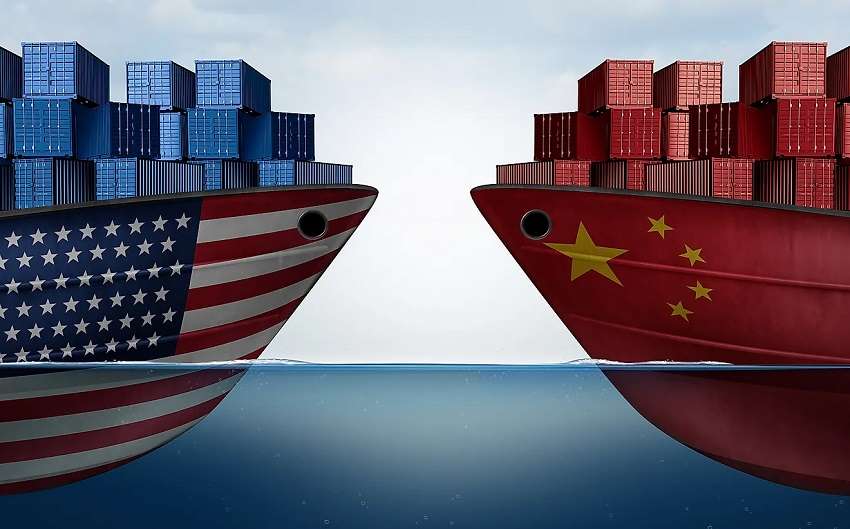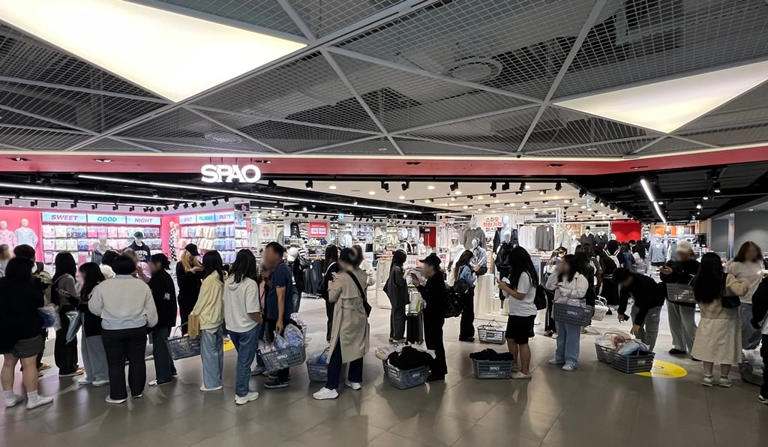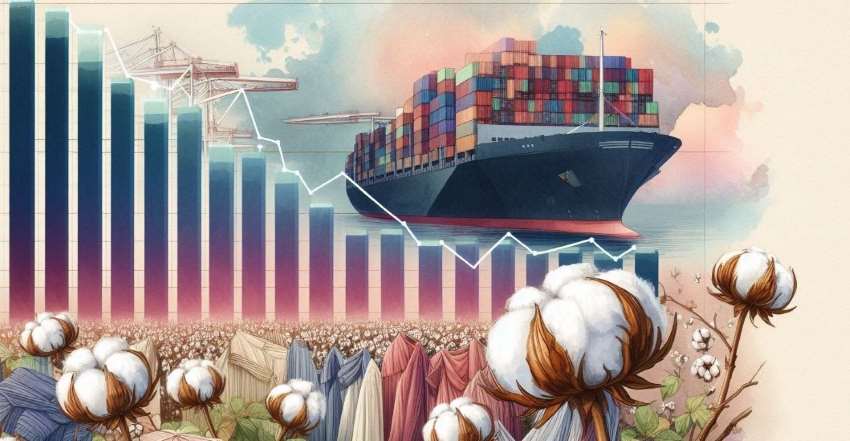FW
The textile, clothing and footwear industry in Fiji is gearing up for bigger growth. Fiji’s niche is specialised products in small volumes. It is close to its main markets of Australia and New Zealand. The developing country preference offered by Australia at the beginning of this year has also opened some new doors as it offers better rules of origin.
SPARTECA (South Pacific Regional Trade and Economic Co-operation Agreement ) is a nonreciprocal trade agreement where Australia and New Zealand offer duty-free and unrestricted access for specified products originating from the developing island member countries of the Pacific Islands Forum. However, low cost Asian competitors continue to attract bulk orders because of lower pricing. The challenge now is to convince buyers to come back to Fiji.
The industry is working on increasing exports and creating more employment. There has been a significant growth in employment numbers in the garment manufacturing factories with close to 8,000 staff now directly employed. This increase is attributed to the expansion of current manufacturers and a few new factories opening up. Work on revamping training facilities for the industry is going on. Meanwhile raw material inputs for the textile, clothing and footwear industries have been made duty-free. Sewing machinery, spare parts are duty-free as well.
Bangladesh has halted all jute exports to Pakistan. This has put Pakistan’s mills in trouble. Any delay in supply would mean an end to production of jute products especially jute sacks and leave thousands of its labor force jobless. Pakistan is one of the biggest importers of Bangladesh jute. If jute sacks are not available, the storage of crops, especially of wheat, rice, grains, and potatoes, is likely to go waste throughout Pakistan.
Raw jute was waiting to be shipped at Bangladesh’s ports, but the government issued a notification by hich exports of raw jute were suspended until further notice. The jute sector in Pakistan is already facing stiff competition from woven polypropylene and other packaging materials. Small farmers are likely to be the worst hit by the ban since they would not be able to sell their crops without the required jute bags.
Bangladesh is the largest exporter of raw jute in the world. It imposed the ban on jute exports to increase supply of the fiber for local jute bag and sack-makers. Jute prices have shot up in Bangladesh due to heavy rains and floods which caused yield loss. Mills in Pakistan, Nepal and some in India depend on Bangladeshi jute.
Gujarat is likely to benefit from the growing interest of Chinese dyestuff and intermediaries manufacturers. They are looking to invest in Gujarat through joint ventures with local partners. Tian Liming, Vice Chairman and Secretary General of China Dyestuff Industry Association (CDIA) at the inauguration of 5th 'Interdye Asia' said that 10 Chinese companies have shown interest in projects in Gujarat.
According to Liming, the fundamental idea is to expand commercial relations beyond the cooperation with Dyestuff Manufacturers Associations in India and invest in various projects. Jiangsu Yabang Dyestuff and Shanghai Anoky Group are amongst the 10 companies interested in investing around $10 million.
Statistics reveal, China’s annual revenue from dyestuff is $10 billion with 300 dyestuff manufacturers producing 1.2 million tonnes of dyestuff. India’s 1,000 manufacturers, produce 0.3 million tons of dye stuff, generating $4 billion revenues. Also, as acknowledged by Janak Mehta, President, Dyestuff Manufacturers Association of India (DMAI), more than 80 per cent manufacturers are located in Gujarat. Contribution $2.5 billion revenue from exports and $1.5 billion from domestic market together.
The 5th 'Interdye Asia' exhibition held from December 3 to ,5 was organised by CDIA and CCPIT Shanghai Sub-council at Gujarat University Convention and Exhibition Centre. Supported by CHEMEXCIL, DMAI, Gujarat chapter of Textile Association of India (TAI), SGTPA and GPE Expo. The event saw participation from 200 companies including 80 international firms and approximately 110 domestic companies.
The global textile industry is undergoing a major transformation. Consumers nowadays prefer synthetic textile fibres over cotton fibre and carbon black, one of the primary dyeing substances utilised to dye textile fibers. Synthetic textile fibres are, therefore, witnessing soaring demand as a result of this shift in consumer preference. According to a market study published by Transparency Market Research (TMR), the global carbon black market for textile fibers stood at $597.2 million in 2012 and it is expected to rise at a CAGR of 7.10 per cent from 2013 to 2019 and reach $964.4 million.
The global carbon black market for textile fibres is analysed on the basis of types of products and end users. Polyester, acrylic, and nylon are the key segment of this market based on products. The carbon black market for polyester fibres dominates the global carbon black market with a majority share. Owing to the wide usage of polyester, this market segment is likely to maintain its dominance in the coming years as well.
The markets for apparel, home textiles, automotive, protective clothing, and agriculture are the key end users of carbon black. The apparel market has emerged as the biggest consumer of carbon black for textile fibres, accounting for more than half of this market. While this market segment is likely to continue to lead, the demand from the agriculture textile and automotive textile industries is projected to witness immense growth over the next few years.
North America, Asia Pacific, Europe, and the Rest of the World are the main regional markets for carbon used in textile fibres. Asia Pacific at present is dominating the global market for carbon black used in textile fibres. The high growth rate of the GDP in developing Asian countries such as India and China is driving the textile industry in this region, thereby fueling the demand for carbon black used in textile fibres.
The Europe carbon black market for textile fiber has occupied the second position among the regional markets and the North America and the Rest of the world are also witnessing robust demand for carbon at present. The soaring demand for synthetic fibres from the Middle East is expected to drive the demand for carbon black utilised in textile fibres in the Rest of the World. Analysts expect the Rest of the World market to report the fastest growth over the next few years.
www.transperancymarketresearch.com

Targets $10 billion in exports

Apparel segment is the highest contributor to exports in the economy. In 2014, apparel experts were worth $4.9 billion, just short of the $5 billion target, increasing by 9.2 per cent since 2013. Now the country has set an ambitious export target of $10 billion for the apparel industry, which it aims to achieve by 2025.
After the new Unity government led by President Maithripala Sirisena and Prime Minister Ranil Wickremesinghe, came to power this year, two premier apparel associations in Sri Lanka decided to join hands. Sri Lanka Apparel Exporters Association (SLAEA) merged with the 200 Garment Factory Program Association (200 GFP) to strengthen the aim of all their members. Jafferjee said the association is pleased with the 19th Amendment to the Constitution and the establishment of independent commissions, which are clear signs that Sri Lanka is stepping in the right direction and working towards creating prosperity in a fair and just society. “The constructive engagement with International organisations to address human right issues though a domestic mechanism is another positive step to improve our international relations,” he said.
Sri Lanka is the largest industrial exporter in the country, exporting $4.9 billion in 2014 with a value addition of 60 per cent. With the advent of GSP+, the industry expects to increase its growth rate substantially in the future. The industries’ credentials as a green, ethical, high quality, reliable manufacturing destination is globally recognised. “We will continue to strengthen the competitive position with investment in technology, automation, lean management systems and upskilling our associates. We have also begun our product innovation and design journey to get high value-addition on the front end. Our local brands are making waves, and we expect more to fill the retail malls of regional markets in the future,” said Jafferjee.
Facing challenges amid stiff competition
Jafferjee further said for the past few the growing number of multi-lateral, regional and bilateral trading arrangements have been a concern. The preliminary conclusion of the Transpacific Partnership Agreement (TPP) among 12 nations, covering 45 per cent of the world GDP, will be a serious challenge to the industry. “We, as the largest exporter in the country, fully endorse the Prime Minister’s policy direction that we urgently require an international trade policy framework to bridge such threats. India, China, the US, Korea and Singapore are already on the road map of the government for such negotiations. Our membership also believes that Japan, Brazil and Turkey, too, should be added to this for preferential trade negotiations.”
The industry is happy that the government is taking positive measures to regain GSP+. The steps taken towards creating good governance and an answer to some of the serious issues that were raised while withdrawing GSP+.
Jafferjee also highlighted issues being faced by the industry including the revision of PAL from 5 per cent to 7.5 per cent, and NBT from 2 per cent to 4 per cent that will have a serious impact on capital investment program, revision on duty on sale of garments to Rs 200 per piece, which is an increase of 800 per cent from the existing rate structure, income tax rate revision from 12 to 15 per cent for value added exports and under the reform measures, the domestic market and export income are unified into one standard rate of 15 per cent. He also urged for government intervention in wage process be limited only to tri-partite arrangements of the Wages Board for the establishment of minimum wages for the industry.
On a concluding note, Jafferjee said, “We are encouraged that even today, seven advanced economies are occupying spots among the 10 largest exporters of apparel in the world, which only strengthens our conviction that we can continue to grow and play this role for many years. In this backdrop, we have set our own a target of $ 10 billion by 2025 and continue to be a strong player, not only in rural Sri Lanka but regionally and globally as well.”
www.srilanka-apparel.com
The United States’ Generalised System of Preferences (GSP), set up in 1974, strikes duties off imports that come from 122 countries and territories and Myanmar is not a part of its as of now, the US has indicated that after the reauthorisation of GSP in June, the country may become eligibile for GSP benefits.
After reviewing the progress the government of Myanmar has made over the last few years on labour rights reform, including its ongoing efforts to address issues related to freedom of association and other internationally recognised worker rights, the US will decide upon granting GSP access to the country.
Trade between Myanmar and the United States is relative too little compared to its rivals. Myanmar’s total bilateral trade for this fiscal year to November was around $17.1 billion, according to the Ministry of Commerce. Meanwhile, bilateral trade between Myanmar and the US for the year ending in October came to just over $300 million.
Meanwhile, Myanmar’s currency kyat has been witnessing a constant fall against the US dollar, which is making a negative impact not only on the country’s domestic market but even export oriented businesses. The currency has fallen by more than 25 per cent against to the dollar this year to 1,300 kyat on Tuesday this week, its weakest. In the unofficial market, the rate reached up to 1,315 kyat.
According to Commerce Minister Tofail Ahmed, no extension will be granted to Accord and Alliance, two international bodies to monitor Bangladesh’s readymade garment factory conditions. Speaking at the inauguration ceremony of an international exhibition on building and fire safety at the Bangabandhu International Conference Centre in Dhaka, he said that the country’s garment factories have undergone a transformation.
According to Ahmed, most of the garment factories now adhere with standards set for them and workers are working in a safe and job-friendly environment. He added that the calamities caused by fire at Tazreen Fashions and the Rana Plaza building collapse have created a wrong impression about Bangladesh in many importing countries.
Accord and Alliance have been allowed to carry out factory inspections in Bangladesh by July 2018. These two bodies were formed by international buyers of Bangladeshi garments with garment manufacturers to improve working conditions and safety standards. They began work in 2013 for a contract term of five years.
Alliance has so far inspected 587 factories and trained the workers employed by many of them. Accord has inspected 1,289 factories. The minister said that several countries do not allow such bodies to inspect factories. They are denied visa if they express their intention to inspect factories in those countries. “But in our country, we have Alliance and Accord. They are trying to have their terms extended. But that will not be allowed. They will not get even a day’s extension,” he asserted.
Lectra has announced the launch of its new FocusQuantum airbag cutting solutions. Designed to enable suppliers to deliver airbags to carmakers on time, FocusQuantum represents a major breakthrough in airbag manufacturing.
It enables fully streamlined operations meeting the stringent requirements of the uncompromising airbag manufacturing process. The zero-defect production made possible by the state-of-the-art laser cutting solution allows road safety to be incorporated upstream in the value chain through complete control over cutting quality.
FocusQuantum is a comprehensive airbag solution range, combining high-performance laser cutters for both one-piece woven (OPW) and flat airbags, as well as a purpose-built software suite and a full range of value-added professional services covering implementation, change management and support, to ensure operational excellence in the cutting room.
These laser cutter range offers more than twice the productivity of solutions currently on the market, together with unmatched precision and enhanced reliability of predictive maintenance, enabling a high level of manufacturing excellence at an optimal cost per airbag. The ergonomically designed solution optimizes material reloading and the gathering of cut parts for even greater operational efficiency.
The FocusQuantum laser-cutters, software suite and full range of value-added professional services will be available starting in January 2016.
www.lectra.com
Hosaf, the South African producer of PET resin since 1998, has entered into an agreement with Chemtex and Polymetrix to increase the capacity of its PET resin plant at South Africa by about 88 per cent. Chemtex and Polymetrix will provide the technology package, design and equipment for the plant. It currently produces 1,28,000 metric tons of finished product on an annual basis. This expansion will enable Hosaf to increase its capacity to about 2,40,000 metric tons per annum.
This project will deliver high quality PET resin with enhanced plant economics and will position Hosaf as a highly competitive and premier provider of PET resin in the growing regional market.
Chemtex is a global engineering and technology company. It specialises in delivering value added project solutions for its clients in the polymer and fibers, chemicals, energy and environmental industries. The company has successfully delivered hundreds of projects worldwide.
Polymetrix is a worldwide engineering group active in the design and construction of plants and equipment, with headquarters in Switzerland. With its vast technological expertise and engineering know-how, Polymetrix is an international leader in PET decontamination and SSP plant engineering.
Balkrishan (BK) Goenka of Welspun Group had to roll back his ambitious backward integration plan between 2009 and 2011, when the company decided to diversify into other business areas such as sponge iron, steel slabs, thermal power and infrastructure. The reason was adverse impact of diversification on its earnings and contraction of the group’s market value. However, today he has managed to bounce back through restructuring his business empire.
Further, an order passed by markets regulator Sebi, banning some promoter entities of Welspun from participating in the capital markets due to alleged stock manipulation, added to the company’s woes, however, Goenka worked around the challenges faced by his company. He chalked out a strategy to bring down losses by selling assets and exiting non-performing businesses. All his efforts have resulted in today’s Welspun that enjoys a healthier balance sheet, a better debt profile, positive earnings growth in its textiles business.
Since September 22, 2013, Welspun India (WIL)—the textiles company that manufactures terry towels and home linen—has witnessed its share price multiply almost 14-fold from Rs 61.75 (on September 22, 2013) to Rs 832.20 per share (on September 22, 2015).
www.welspunindia.com












